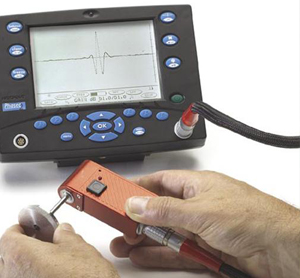- Home
- About Us
- Inspection Services
- Conventional Non-Destructive Testing
- Ultrasonic Weld Scan
- Ultrasonic Thickness Gauging
- Eddy Current Testing
- Radiography Testing
- Liquid Penetrant Testing
- View More

Eddy current testing is an advanced Non-destructive testing (NDT) technique. It is used to simplify the quality and maintenance of material, products, construction in different spell of testing process. Eddy current testing is used to reach the optimum surface and subsurface fault in every portative product and material.
The range of quality control manufacturing functions is present pertaining Eddy current inspection principles. Contemporary Eddy current NDT technique has upgrade functions in complicated engineering applications, heat exchanger tube testing, advanced Aerospace component testing etc.
In its most basic form — the single-element ECT probe — a coil of conductive wire is excited with an alternating electrical current. This wire coil produces an alternating magnetic field around itself in the direction ascertained by the right-hand rule. The magnetic field oscillates at the same frequency as the current running through the coil. When the coil approaches a conductive material, currents opposed to the ones in the coil are induced in the material—eddy currents.
Variations in the electrical conductivity and magnetic permeability of the test object, and the presence of defects causes a change in eddy current and a corresponding change in phase and amplitude that can be detected by measuring the impedance changes in the coil, which is a telltale sign of the presence of defects.This is the basis of standard (pancake coil) ECT. ECT has a very wide range of applications. Because ECT is electrical in nature, it is limited to conductive material. There are also physical limits to generating eddy currents and depth of penetration
Computerized record keeping: partial.
Faster inspections.
Better detection capabilities.
Easier analysis because of simpler scan patterns.
Improved positioning and sizing because of encoded data.
Faster identification, location and isolation of faults.